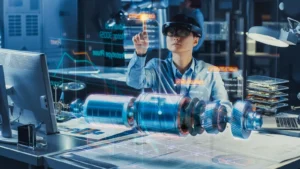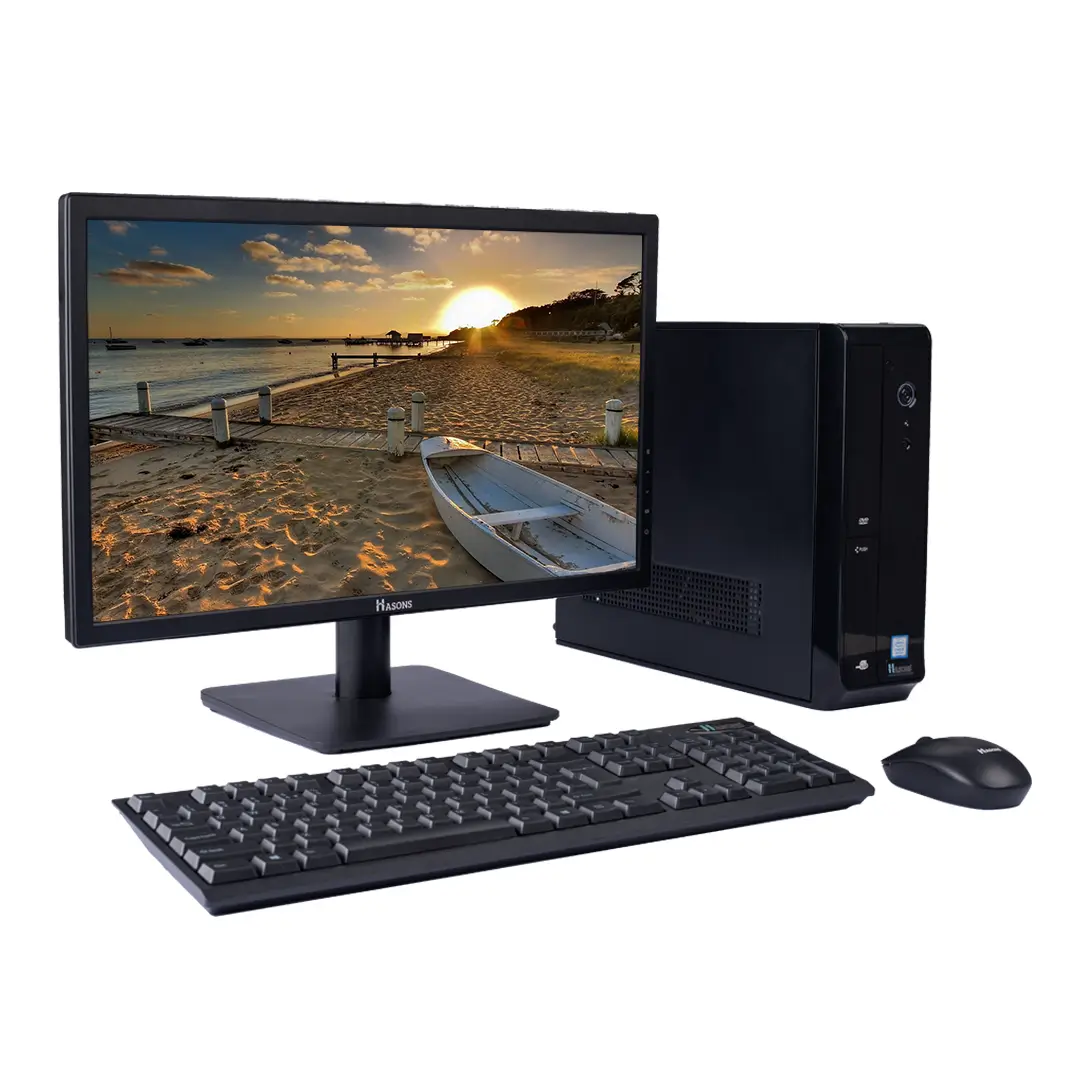Types of Virtual Reality : Introduction to Virtual Reality
Virtual reality (VR) is a computer-generated simulation of a three-dimensional environment that users can interact with in a seemingly real way. Unlike traditional user interfaces, VR places the user inside an experience that is completely immersive, creating the sensation of being transported to another world.
The origins of virtual reality technology date back to the 1950s when cinematographer Morton Heilig developed the Sensorama, an immersive multi-sensory simulator designed to fully immerse participants in a film. While primitive in comparison to modern VR, this device was one of the earliest attempts at simulating an Artificial reality experience.
Decades later, VR began gaining mainstream traction in the 1980s when Jaron Lanier, founder of VPL Research, began developing various VR gadgets, including goggles and gloves to improve user interaction. This helped popularize the term “virtual reality” itself.
Today, virtual reality has an expansive range of applications across diverse sectors like healthcare, education, engineering, entertainment, and more. VR allows users to interact with environments and situations that are otherwise difficult or impossible to experience in real life.
As VR technology continues maturing, it shows immense promise in transforming how we work, learn, travel, consume media, communicate, and more.
Types of Virtual Reality Systems
There are three broad categories of VR systems with varying degrees of immersion and interactivity:

Non-Immersive VR
Non-immersive VR refers to systems that provide a moderate sense of immersion but lack capacities for interaction and navigation. These are entry-level VR experiences that work well for casual users rather than hardcore gamers.
Definition and Characteristics:
Non-immersive VR uses conventional displays like a computer, TV, or mobile screen as the medium for visualizing the virtual environment. Users cannot physically enter the simulated world or freely navigate through it. The VR experience is limited to just viewing 3D content on a screen.
Examples of non-immersive VR:
- Desktop VR: Works by rendering VR environments on a traditional desktop or laptop screen. Users can explore the VR world using a mouse or trackpad but cannot physically walk through the environment.
- 360-degree Videos: These are immersive 3D videos viewed through a headset that allows looking around in all directions. However, users cannot move within the video or control playback.
Use Cases and Applications:
Non-immersive VR has many applications in situations where complete immersion is not required:
- Watching 360-degree content for entertainment and tourism
- Viewing 3D models of industrial equipment or architectural structures
- Interactive product simulations for online shopping
The main advantage of non-immersive VR is being highly accessible. It can deliver a moderate VR experience using existing devices without dramatic hardware upgrades. However, the downside is limited immersion and user agency.
Now, understanding this concept is simple and entertaining for Hasons. Using the Hason website you can always stay one step ahead in your job, business, or studies by purchasing New Age Desktops and i3 Intel Core Processor Desktop starting from 15000/-. Monitors, CPUs, and Gaming Desktop are also available. Register on Hasons and order your Tech Partner Now. Get exciting offers and benefits on your every purchase. Contact us so our support team can guide you in purchasing the right Tech Partner.
SwiftLite I3R-8D-10-256 Desktop 10th Gen Desktop I3 Processor 8GB RAM 256 SSD|1 TB HDD | H410 Motherboard Chipset | 21.5 Inch Screen | Desktop Set
SHOP NOW
Semi-Immersive VR
Semi-immersive VR provides enhanced realism and immersion while still limiting mobility and interactivity. These System bridge the gap between non-immersive and fully immersive VR.
Definition and Features:
Semi-immersive VR utilizes external projection systems or multiple large displays to surround users in a VR environment. This creates a heightened feeling of presence in the virtual world.
Examples of semi-immersive VR systems:
- Cave Automatic Virtual Environments (CAVE): CAVE systems use 3 to 6 wall-sized screens for a 270-degree viewing experience. Users wear stereoscopic glasses inside the CAVE to perceive 3D environments.
- Projection VR: Uses several angled projection screens to display a virtual environment that users can look around and walk through to an extent. Motion is tracked, but interaction is limited.
Advantages and Limitations:
The primary advantage of semi-immersive VR is providing greater depth and peripheral immersion at relatively lower costs than fully immersive options. This makes it ideal for specialized commercial applications. However, there are limitations in user freedom.
Fully Immersive VR
Fully immersive VR aims to provide ultra-high fidelity simulated environments that are difficult to distinguish from reality. This leads to unmatched levels of immersion.
Definition and Key Elements:
Fully immersive VR generates realistic 3D virtual worlds that respond to a user’s actions in real-time. Key elements include:
- Wearing a head-mounted display (HMD) containing high-res displays for stereoscopic 3D visuals.
- Using handheld motion controllers and body tracking sensors for natural movement in the environment.
Examples of fully immersive VR systems:
- Head-Mounted Displays: All-in-one VR headsets like Oculus Quest or sophisticated HMDs like HTC Vive that are powered by a PC.
- Room-Scale VR: Uses external sensors to allow users to freely walk through a designated real-world space whose boundaries are mapped into the VR environment.
Level of Immersion and Interactivity:
Fully immersive VR provides unparalleled realism and sensory stimulation. Users feel a heightened sense of “presence” in VR worlds, forgetting their physical environment. Natural movement and realistic interaction with virtual objects deepen immersion drastically.
This makes fully immersive VR ideal for highly engaging gaming and entertainment applications. The high cost of implementation has limited its adoption for professional use cases so far. But as prices fall over time, its Applications will expand significantly.
Applications and Use Cases of Virtual Reality
Virtual reality today spans a vast range of industries and use cases leveraging different degrees of immersion and interactivity. Let’s look at some major applications.

Gaming and Entertainment
VR has revolutionized gaming and entertainment by transporting users into expansive, responsive worlds full of imagination.
Popular VR games place players directly into the center of action-packed adventures letting them look, move, and interact as characters in fictional game worlds.
Popular VR gaming platforms and titles:
- Oculus Rift for PC VR Gaming with titles like Half-Life: Alyx and Lone Echo
- PlayStation VR supporting major console game titles like Gran Turismo Sport and Beat Saber
Future Possibilities:
With constant improvements in VR technology, future gaming will become even more realistic and intricately detailed. Motion tracking will be refined to enable flawless mimicry of real-world movements.
VR gaming is expected to become increasingly multiplayer-focused as well with shared cross-platform VR worlds and experiences. There are infinite possibilities for VR to transform digital entertainment in the next few years.
Education and Virtual Tours
VR presents immense opportunities for enhancing education by creating immersive learning environments that bring abstract concepts to life. Virtual tours also allow students to visit virtually inaccessible locations.
Some examples include:
- Medical and healthcare education: VR surgical simulations provide practical training with no risk, while interactive 3D models aid anatomy lessons. Virtual labs simulate expensive lab equipment or dangerous experiments.
- Flight and vehicle training: Aerospace engineers use VR to prototype aircraft and spacecraft controls. Pilots and drivers are trained for emergency situations in VR simulations.
Immersive VR learning experiences tend to be more engaging and memorable than conventional teaching tools like textbooks and 2D images.
Future Trends and Innovations in Virtual Reality
While VR has already seen massive evolution, there are many exciting innovations in the pipeline that will continue propelling its growth and capabilities.
Advancements in Hardware and Displays
As VR technology matures, bulky headsets are becoming lighter with improved ergonomics for extended use. Display technology is progressing from small LCDs to extra-high resolution OLED screens with HDR and wide fields of view for photorealism.
Eye-tracking sensors allow foveated rendering that conserves power by optimizing graphics based on what you’re looking directly at.
Wireless and cloud-driven headsets remove mobility constraints and reduce hardware requirements for a more seamless experience. Augmented and mixed reality integrations are also gaining traction.
VR in Architecture and Design
VR is transforming architectural design and construction workflows. Designers can create 3D VR models of buildings and spaces for client presentations instead of paper sketches or miniature scale models.
VR permits virtual walkthroughs of buildings before construction, allowing for design improvements. Construction teams can also reference VR models onsite for better coordination and communication.
As VR gains greater adoption in these fields, it could expand creative possibilities and optimize design and construction processes.
What is the history of virtual reality?
While it may seem like a brand new concept, people have dreamed up the idea of virtual reality for decades:
1800s – The earliest VR concepts came from sci-fi writers and visionaries who imagined immersive art, stage shows, and even full-body experience machines.
1960s – The first VR head-mounted display was created, called the Sword of Damocles. It was big and clunky, but proved the concept.
1980s-90s – Huge breakthroughs happened as consumer VR products emerged like the Nintendo Virtual Boy (flop) and SEGA VR glasses. The term “virtual reality” was coined.
2010s – Oculus Rift and other modern VR headsets reignited mainstream interest and launched the current era of high-quality, affordable virtual reality systems.
Today, VR capabilities continue advancing rapidly thanks to better hardware, software, displays, graphics, and motion tracking. The history of this amazing Technology has been long but exciting!
Conclusion
Virtual reality has progressed tremendously from being a far-fetched science fiction concept just a few decades ago. Today, immersive VR experiences are more accessible than ever across diverse domains from gaming to business.
But overall, the level of innovation in the VR space is accelerating rapidly. With the right applications, virtual reality can enhance human creativity and potential like never before.
| If you are Reading Types of Virtual Reality then also check our other blogs: | |
| Characteristics of Cloud Computing | Assembled Desktop Computer |
| Edge Computing | Manufacturing Technology |
Types of Virtual Reality
- What are the main types of virtual reality systems?The three main types of VR systems are non-immersive VR, semi-immersive VR, and fully immersive VR. They vary in their level of immersion, realism, and interactivity.
- What industries are using virtual reality today?Key industries using VR include gaming and entertainment, healthcare, education and training, engineering and design, real estate, and the military. VR applications span simulation training, visualization, virtual tours, therapy, and manufacturing.
- What technology innovations will shape the future of VR?Upcoming VR innovations involve hardware like lighter/compact headsets with expanded fields of view, high-res displays, eye-tracking and hand-tracking, and haptic feedback. 5G, cloud VR, and mixed reality will also drive progress.
- How can VR enhance learning and education?
- VR enables very engaging educational simulations and virtual field trips that make learning more interactive and memorable. It also allows learning dangerous skills with no risk.
- Does VR have risks or downsides?
- VR overuse can sometimes cause motion sickness, dizziness, and adjustment issues after use. There may also be risks if inappropriate content is used without oversight, especially for children. Moderation is advised.

